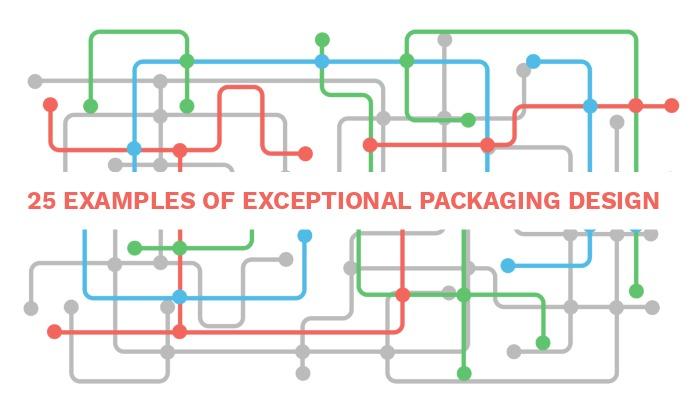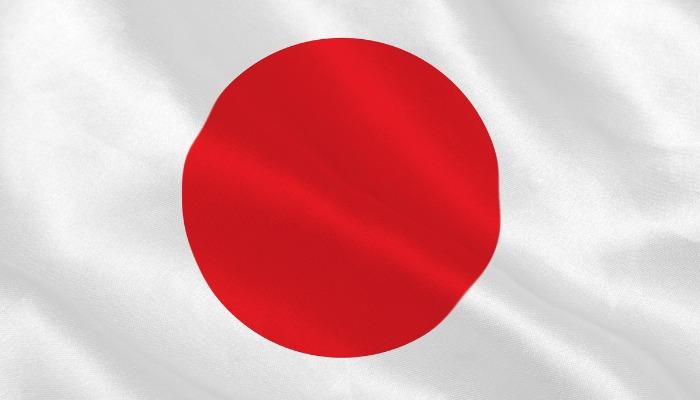Good things come in great packaging!
Package design, exceptional packaging design that is, does two key things: it draws a consumer’s attention to it and ultimately in and of itself, it closes the deal. Certainly, when shopping, a buyer does approach the process with an idea already of what they intend to purchase. However, a unique and attractive package design really can persuade that person otherwise. According to a 2018 survey, it was found that nearly 70% of purchases are in fact influenced by the packaging. This obviously is no small number; which is why design is so critical.

So how do you do it right? What sorts of design elements, graphics and images should go into your packaging design in order to make it a standout versus just another product on the shelf? There are tons of ways you can go with your package design in order to make it enticing to consumers. Below are sixty examples that just might help get those creative juices flowing.
Table of contents:
- ● Good things come in great packaging!
- ● Exceptional Packaging Design: Why is it So Important?
- ● The Use of Pattern in Package Design
- ● Black and White Patterns
- ● Retro Patterns
- ●
- ● Cultural Patterns
- ● Metallic Packaging Patterns
- ● Floral Patterns
- ● Logo Based Patterns
- ● Keeping the Design of Your Package Simple
- ● Basic Lettering on Your Package
- ● A Single Design Element
- ● Minimize Color
- ● Monochromatic Color Scheme
- ● Playful Package Design
- ● Get Interactive
- ● Cute Characters
- ● Witty Wording
- ● Get a Little Crazy with Design
- ● The Bolder the Colors on Your Package, The Better
- ● Sticking to One Product Package Color
- ● Make it Geometric
- ● Go Toward Warmer Bold Colors
- ● Modern Packaging is Definitely In
- ● Cleaner fonts
- ● Sustainable Packaging Design
- ● Add Convenience Features
- ● Partner with Local Artists
Exceptional Packaging Design: Why is it So Important?
Let’s start with the obvious question: why should you spend some time developing killer packaging design for your products?
Your design is intimately associated with your brand. Your brand is who you are, and therefore your packaging needs to reflect this every bit as much as any piece of marketing material you distribute or your website for instance.
It has been found to influence consumer behavior in key ways. For instance, the use of certain colors and patterns can evoke feelings of happiness within a potential buyer. And happy almost always leads to a purchase.
It says a lot about the level of care and attention to detail that your business has, across the board.
That said, let’s look as some dynamic examples of exceptional packaging.
The Use of Pattern in Package Design
Patterns can be simple, or they can also be more complex. The key with using patterns in your design is to be it consistent. Let’s say you’re using a pattern to package one product; it is good practice to replicate this pattern across all relevant/similar products.

In fact, when utilizing patterns in packaging design many companies will actually integrate this same pattern into a number of their brand assets. This not only establishes continuity but also starts to make that particular pattern recognizable as a central component of your brand.
Black and White Patterns
Black and white pops. If done properly, you can create a truly dramatic impact by repeating a black and white pattern in your design. And it is a proven eye-catching way to present your product.
Retro Patterns

Retro is making a comeback in big ways. And as far as packaging design goes, it definitely gets noticed. There’s an innate sense of nostalgia associated with this style of design. Especially when making purchases, people like to be reminded of simpler times—and particularly now, of better times.
Cultural Patterns
There are some patterns that really do bespeak a certain culture and/or heritage. When considering use of this type of pattern in your design, think about your target demographic; will this appeal to them? Will it inspire them to want to try your product?
Metallic Packaging Patterns

Especially if you combine the metallic look and feel with perhaps a textural element such as can be achieved with foil stamping for instance, your product is bound to leap off that shelf, visually speaking. Metallic patterns tend to lend an air of classiness and elegance to product packaging.
Floral Patterns
This isn’t necessarily for every brand, but there are some key industries/markets that could benefit from a floral patterned package done right. For example, this style could be great for a cosmetic company or some other such beauty-driven business.
Logo Based Patterns

You can actually take your logo and in repeating it (or elements/aspects of it) create a totally unique-to-your-brand design. Think about it, no other company is going to be packaging their products with this kind of patterned design.
*Did you know: Patterns on packages reinforce a sense of order. The brain is drawn toward the repeated image. In observing the pattern, the mind connects it with a sense of order—order is tied to a feeling of calm.
Keeping the Design of Your Package Simple
There is definitely something to be said for simplicity when it comes to any package design. Over complicate things, and consumers will correspondingly feel that sense of “this is much too complex.” They will inevitably be tuned off by this. Simplicity can have a tremendous amount of “pop,” especially if competitor brands are in fact over-saturating their package design. Think about your product and the one or two things you really want to emphasize. You may discover that keeping it simple in this way, gives it broader appeal.
Basic Lettering on Your Package

Some of the most successful brands forego vivid graphics and images and opt for simple lettering against a monotone background. It’s eye-catching and unexpected. This unexpected quality is almost always going to get a shopper to at least give it a second look.
A Single Design Element
Some brands are so bold as to leave off text and images all together; rather, they present their product packaged with a simple graphic. Perhaps a logo. Perhaps an image relevant to the product itself. Creativity certainly comes into play here as, if you’re going to go this route, it has to be truly inventive.
Minimize Color
Again, black and white could come into play here as well. Sometimes too much color can make the product packaging seem a bit noisy. Whereas, if you’re trying to get that minimalist effect across black and white is often the best way to go.
Monochromatic Color Scheme

Beyond black and white, you could also choose to go with a monochromatic color scheme. This proves rather soothing to the eyes, and ultimately can be quite attractive if executed well.
*Did you know: By keeping it simple you stand to cut packaging costs. It’s pretty easy to figure out that if you’re using fewer colors, fewer images and/or pictures, the graphic design end of it is going to involve less and thus prove less expensive.
Playful Package Design

A product doesn’t necessarily have to take itself too seriously. In fact, playful, fun packaging might be just the thing to really bring your product to that next level. What would draw you in as you’re wandering the aisle of a store: a run-of-the-mill package or something that is bold and quirky, something that may even push the boundaries a little, something that inherently makes you smile? There is most definitely a place for playful package design.
Get Interactive
What could be more alluring to a consumer than a package that actually lets the user engage with it. For example, there are some packages that utilize foldable/origami style elements. How fun! Others embed secret messages somewhere within the design scheme. This one is really all about thinking outside the box as far as packaging goes.
Cute Characters

We all know that certain cereals sell well because of the character’s appeal to children. Think Rice Krispies, think Cocoa Pebbles, how about Lucky Charms. Yours doesn’t necessarily have to be a product for children. Adults like to have a little fun now and then too. If a cute/quirky character fits your brand, then why not go for it.
Witty Wording
Playfulness doesn’t come from image design alone. Some brands do really well with witty wording on their packages. If it’s really clever, you can make a name for yourself with this type of design.
Get a Little Crazy with Design

You don’t necessarily have to color inside the lines. There’s a lot to be said for packaging that seems completely “out there.” Wild colors and shapes, intriguing images, unexpected graphic elements—your package design may leave them scratching their heads a bit, but at least they’re noticing!
*Did you know: Playful packaging evokes a youthful feel. Again, it’s not just about kids. Adults love anything that helps them to feel young again.
The Bolder the Colors on Your Package, The Better
Color is so crucial in some circumstances. If using color, often times companies find that going bolder results in a better outcome: that is to say, more product sales. Again, it is about grabbing the buyer’s attention. What is going to make them notice your product amid a crowd of similar ones? Generally speaking, muted tones and more traditional styling doesn’t get it done as much as bright vibrant colors that speak to the product and also about you as a brand.
Sticking to One Product Package Color
If you’re going the bold color route, that doesn’t necessarily mean you have to go crazy with a multitude of such colors. In fact, a single bold color can make a very exciting statement. Think of the Coca-Cola can. In some ways when it made its debut, it really revolutionized packaging design.
Make it Geometric

The use of color has to be strategic in some cases. This means that if you are going with more vivid hues, you might want to do so, for example, by using blocks of color, arranging them geometrically. This helps give the product package more rhyme and reason, not to mention, it makes it easier on the consumer to identify what your product is all about.
Go Toward Warmer Bold Colors
Reds and oranges for example tend to reflect feelings of warmth, of passion, of fun. Whereas the cooler colors, while still useful if utilized well, are often more difficult to connect with upon first sight, according to some studies.
*Did you know: Coca-Cola really did revolutionize with its red and white logo. In fact, it is estimated that almost 94% of people worldwide instantly recognize the Coke brand because of its trademark red.
Modern Packaging is Definitely In

Giving the times we live in, this ultra modern world we inhabit, it makes sense that modern package design would be trending. So many companies are in fact upgrading and totally revamping the way in which their packaging looks. It’s about understanding what the consumer wants, what they’re looking for, and what type of aesthetic they gravitate toward.
Cleaner fonts
A hallmark of modern packaging is fonts that are streamlined and “cleaner” looking. Gone are the days of Times New Roman. Modern package design embraces the likes of sans serif style fonts. Such fonts also tend to be larger on some packaging, so as to stand out and thus let the consumer know exactly what they’re getting.
Sustainable Packaging Design
Yes, today we are all about sustainability. What can we do to help get the planet going in the right direction—there is no more modern mindset than this. Many companies are moving toward making their packaging biodegradable, using recyclable materials, some are even researching agricultural byproduct such as soybean husk and coffee chaff.
Add Convenience Features

Whether it’s offering reusable pouches as we’re currently seeing with a number of cereal brands, or even providing scannable codes on the package to give consumers more information about the product, making packaging more accessible and thereby user friendly, is becoming very important.
Partner with Local Artists
Supporting your community and subsequently giving back in some way is also hugely trending. To this end, we are seeing more and more brands actually incorporate the work of local artists on their packaging. What better way to get a truly unique and one-of-a-kind package design than by commissioning it from an artist in your community.
*Did you know: Millennials and Gen Z look at packaging differently than older Americans. They are more focused on authenticity and experience versus anything that would otherwise seem gimmicky.
So the question is, how much priority should you give to your packaging design? The answer seems to be: A LOT! Keep in mind, your product package design is the first thing people see when out looking to make a purchase. While certainly the product inside is what matters, they first need to be attracted to that product. Most people actually do judge a book by its cover believe it or not. And so what attracts them—the design of course. The key to highly effective package design…First off, know your product. If for instance, you are selling medical supplies/products, you’re probably not going to want to go whimsical. However, if yours is related to music or entertainment, then absolutely have some fun with the packaging.
Secondly, know your audience. It is just as important to have a firm handle on who you’re selling to as it is on what you are selling. This is where you do some homework. Figure out what that target demographic is and then design your packaging accordingly. And it needs to go a bit deeper than just looking at things such as income level, gender, career outlook. Purchasing is a very behavioral-driven process. It is also attached to emotion. If you can get a deeper sense of your audience, you will be better positioned to create the ultimate package design.
And finally, don’t be afraid to pivot. You may not get it right the first time. Don’t hesitate to go back the drawing board if need be. Or perhaps your packaging is a bit dated and is long past its expiration date. Many of the most major brands in the world have had to update and reinvent their packaging to be able to contend in a modern era. Again, it is all about doing the necessary research and thereby giving your product packaging the best chance to shine.

anne carson
Anne is a former English professor turned content writer. Holding a PhD in Literature, she spent almost a decade in academia putting that degree to use, until finally realizing it wasn't exactly the best fit. A full-time writer, she's learned a great deal about the numerous subjects. She knows a lot about design trends and design templates. A mom of five (two teenagers and three dogs).


